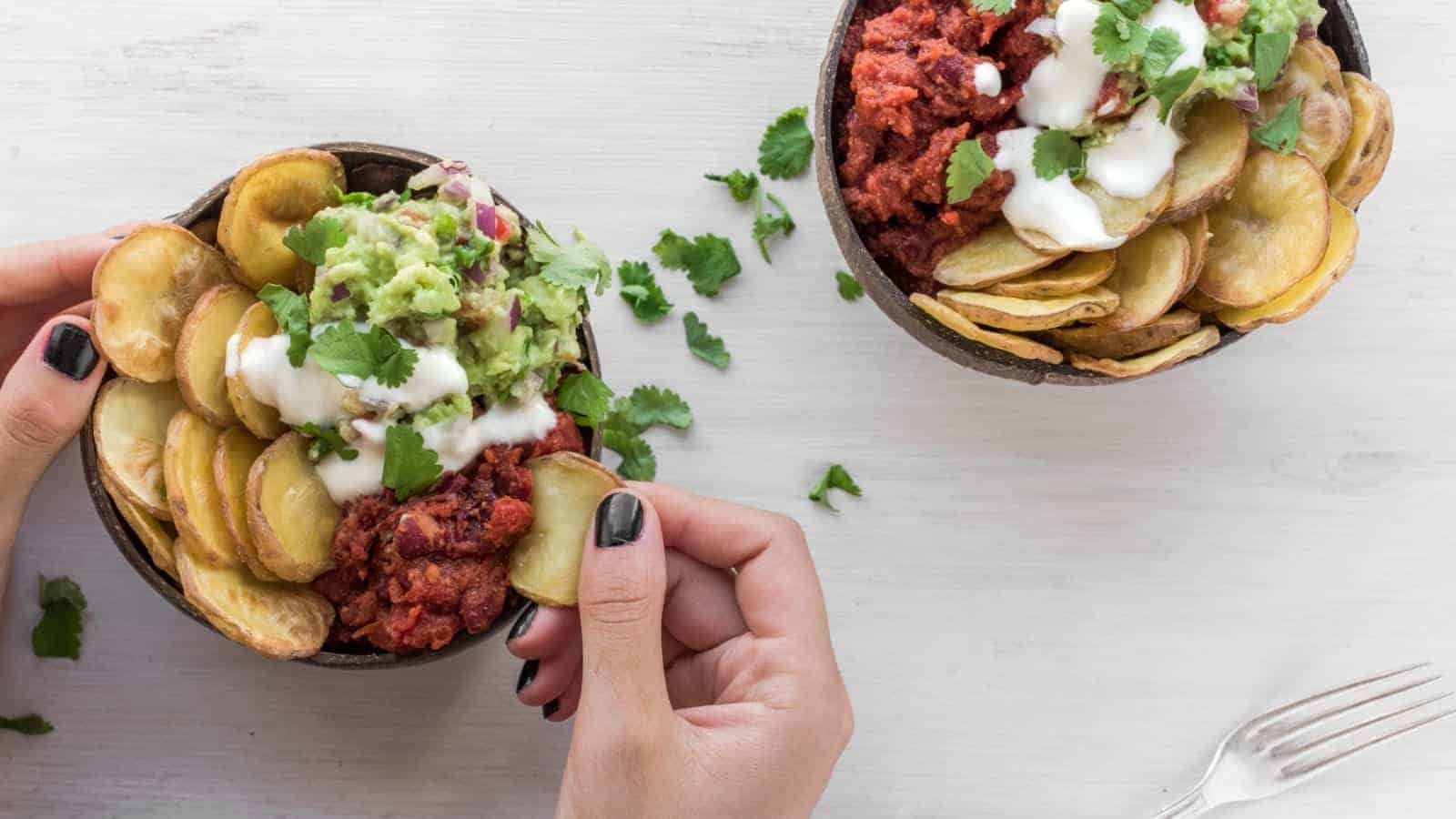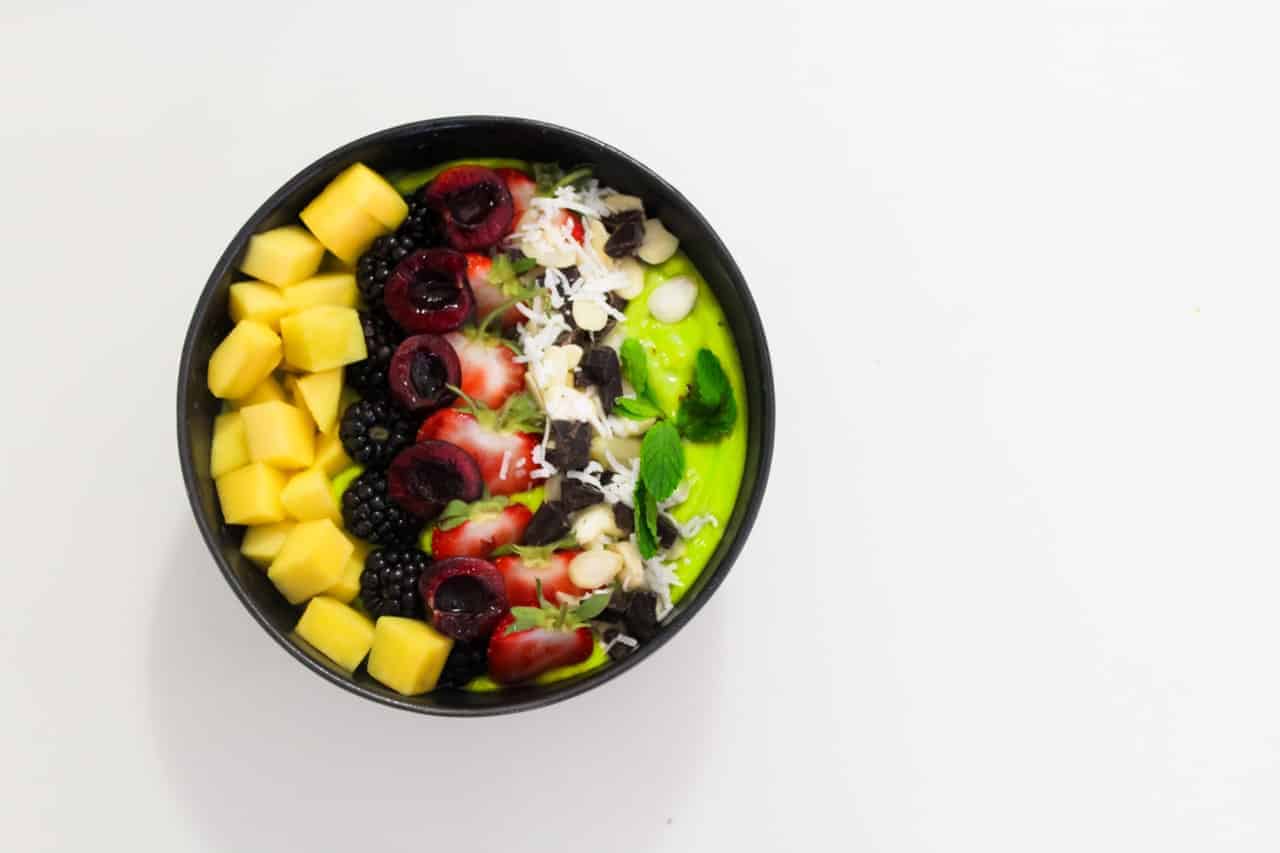The paleo diet consists of whole foods similar to that which the hunter-gatherers ate thousands of years in the past. During the Paleolithic era, hunting for and gathering food was the only option for eating, which resulted in only natural foods being consumed. Basically, a factory and mass-production were not included in the diet.
The paleo diet meal plan offers a wide variety of foods, cooked and prepared in different ways in order to give you more flavor options. There is something for everyone, so you are sure to find quite a few aspects of the diet that you enjoy.
The basic foods that you should eat include:
- Meat
- Fish
- Eggs
- Fruits and vegetables
- Nuts and seeds
- Herbs
- Spices
- Healthy fats and oils
The basic foods that you should avoid include:
- Processed foods
- Sugar
- Soft drinks
- Grains
- Many dairy products
- Legumes
- Artificial sweeteners
- Vegetable oil
- Margarine
- Trans fats
These foods will all be discussed in more detail further in this article.
Benefits of a Paleo Diet
There are many health benefits of a Paleo diet. Between a diet of whole foods and an active lifestyle, there will be lower rates of obesity, diabetes, high blood pressure, and heart disease. This type of diet also leads to major weight loss without counting calories and many other general health improvements.
You will feel better about yourself, have more energy, and think more clearly after becoming used to a diet of whole foods. This will allow for a more positive lifestyle in general.
To get you started with your paleo diet meal plan, here is a more specific food list of what you can eat and what you should avoid.
What to Eat
Meat
There are so many good options when it comes to the meat you can eat on this diet. You can eat beef, lamb, chicken, turkey, pork, and any other type of meat that has not been injected with unnatural supplements or antibiotics.
It is best to choose meat from animals that were grass-fed, raised in a pasture, and organic. This can be expensive, however, so if you can’t pay that much for meat, just choose the least-processed meats that you can afford.
Fish and other seafood
The possibilities with seafood are plentiful and include things like salmon, trout, shrimp, shellfish, and haddock. Seafood is normally low in calories and high in protein. It also contains many vitamins that you need in your diet.
Eggs
You can eat eggs in so many different ways, so there are plenty of options. It is best to choose eggs from free-range chickens. Eggs from chickens that were raised in a pasture, or that were enriched with omega-3 supplements are also a good option.
Vegetables
Vegetables are a great option for whole foods and can be used in breakfast, lunch, and dinner, as well as for a snack. Popular options include broccoli, kale, peppers, onions, carrots, and tomatoes, and can be eaten raw or cooked. You can also season vegetables anyway that you want, allowing variation from day to day.
Fruit
Fruit is great for breakfast or for a snack. It is also a fresh addition to a salad or other meals. You can choose from apples, bananas, kiwi, oranges, pears, avocados, strawberries, blueberries, blackberries, grapes, and many others.
Tubers
Tubers are great side dishes for meals. They include foods such as potatoes, sweet potatoes, yams, and turnips. These can also be prepared differently each time to add more variation to your diet.
Tree nuts and seeds
Another option for snacks or as an addition to a meal, tree nuts and seeds are a nutritious part of the diet. Pumpkin seeds, sunflower seeds, almonds, walnuts, and macadamia nuts are common choices.
Healthy fats and oils
While there are many oils and fats that are unhealthy, the healthy ones are an important part of the diet. You can use extra virgin olive oil, coconut oil, and many others for cooking.
Spices
You can spice up your meals with any natural spices. The options are nearly limitless and include sea salt, pepper, garlic, rosemary, nutmeg, and many others. Spices can be used to add extra flavor to meat, vegetables, and even seeds.
What to Avoid
Artificial sugars and high-fructose corn syrup
This includes things like soft drinks, juice, table sugar, candy, donuts and other pastries, and ice cream. While these foods may taste delicious, they are also detrimental to your health and especially to a Paleolithic diet.
Grains
While it may be tempting to eat bread products, it is important to avoid them when following a paleo diet meal plan. When avoiding grains, it is also important to avoid pasta, wheat, rye, and barley as well.
Legumes
This may be the most surprising food group on the list, as they are often considered healthy options in other diet plans. These foods include beans, lentils, peas, chickpeas, peanuts, and many others.
Dairy products
Not all dairy products are bad for a paleo diet meal plan, but most are. Those that are especially important to avoid are the low-fat options.
Vegetable oil
There are more versions of vegetable oil than what you see labeled as “vegetable oil” in the store. You also have to avoid soybean oil, sunflower oil, cottonseed oil, corn oil, grapeseed oil, safflower oil, and any others that are made with a vegetable product.
Trans fat
Trans fats are bad for nearly every diet in existence. They are commonly found in margarine and other processed foods. Not only are they bad for dieting, they are just detrimental to your overall health.
Artificial sweeteners
When reading ingredient labels, check for aspartame, sucralose, cyclamates, saccharin, and acesulfame potassium. These are all artificial sweeteners that are unhealthy and can ruin the progress you’ve made on your diet.
Processed food
One of the easiest ways to check for processed foods is to look for a label that says “diet” or low-fat. Both of these options are full of processed additives. Another common culprit of processed foods is meal replacements and anything made in a factory.
Modifying a Paleo Diet
Science has more recently decided that there are more modern food options that are still paleo-friendly. These options include butter that is made with milk from grass-fed animals, and gluten-free grains, such as rice.
With this modification, a paleolithic diet is more of a guideline than a strict set diet. Some people choose to add these options, while others choose to stick to the original diet. You do have the option to stray a bit from the recommended foods, as long as you play it safe and make sure the product is naturally made.
A couple other safe options for this diet are red wine and dark chocolate. In moderation, they can even be healthy. Red wine contains antioxidants and nutrients, and dark chocolate contains many important nutrients, as well.
Paleo Drink Options
Like every diet, water is the best option for this diet, but not everyone wants to drink water all of the time. If you want a little variety, other decently safe choices include tea and coffee, as they are made with all-natural ingredients. Tea and coffee have antioxidants and other nutrients that are beneficial to your health.
Paleo for Vegetarians
This diet is healthy since it is nutritionally balanced, but vegetarians need to be more careful. Much of the protein in this diet comes from the meat, and, since vegetarians can’t eat that, they have to find other ways to add protein and still stay within the limits of the diet. It is easy to do as long as you plan ahead and prepare foods that contain protein.
Things to Know Before You Begin
There are some things you should take note of before you switch to the paleo diet.
- It is better to transition to a full whole foods diet slowly
- The meals may become repetitive
- You will not be able to eat out very often
Final Thoughts on Paleo Diet
Even foods that are considered healthy may contain some of the ingredients that should be avoided, so you have to be careful to read every ingredient list when you are on a paleo diet. There are drink, snack, and meal options for everyone, but vegetarians should be extra careful to consume enough protein in their diet.
While short-term results will be evident with this diet, it is important to make a long-term commitment in order to obtain lasting results. This isn’t a diet that you can work hard at for a few days, take a break, and then resume the following week. It requires dedication in order to see the long-term results.
This diet is healthy and will provide all of the nutrients that you need every day. It will improve your overall health, medical conditions, and way of life. You may also notice an increase in your overall energy.

















